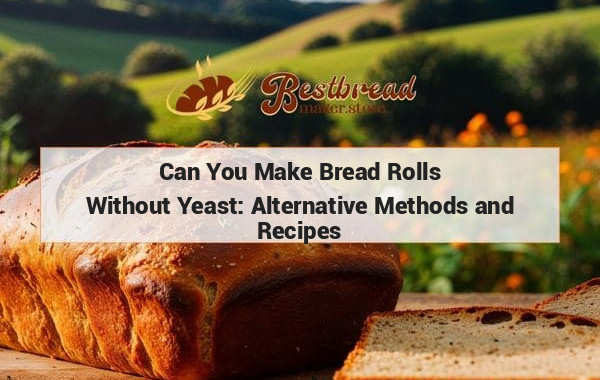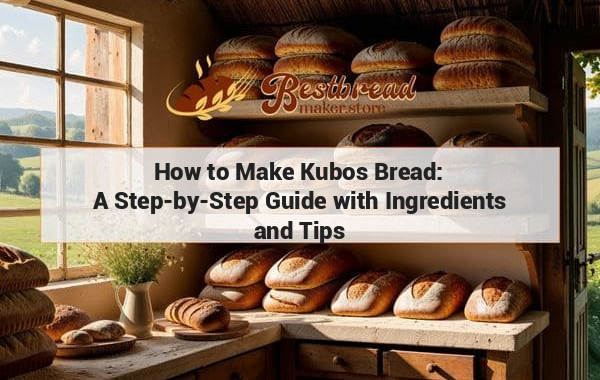How to Use an Oster Bread Maker: Simple Steps for Delicious Homemade Bread
To use an Oster bread maker, start by adding ingredients in the order specified in the recipe. Select the desired setting based on the type of bread you want to make. Press the start button to begin the mixing and kneading process. Once the bread is done baking, carefully remove it from the pan using oven mitts. Allow the bread to cool before slicing and serving. Enjoy fresh homemade bread made with your Oster bread maker!
Using an Oster bread maker can be a fantastic way to make fresh, homemade bread effortlessly. If you're new to using one, this guide will walk you through the process, from setting up the machine to baking your first loaf. Follow these easy steps to enjoy freshly baked bread at home!
Key Takeaways:
- Using an Oster bread maker is simple: add ingredients, select a program, and let the machine do the work. Ensure you use the right bread recipe for the best results.
Understanding How to Use an Oster Bread Maker
When you first purchase an Oster bread maker, it's essential to familiarize yourself with its parts and functions. The bread maker typically includes a baking pan, a kneading blade, and various program settings that make baking bread easy and customizable. The machine takes care of mixing, kneading, rising, and baking the dough, so all you need to do is add ingredients.
Preparing Your Ingredients
Before you start using your Oster bread maker, gather the ingredients you’ll need, which typically include flour, water, yeast, salt, sugar, and fat (such as butter or oil). Pay attention to the recipe measurements because accuracy is crucial for the bread to turn out correctly.
Basic Ingredients for Bread Making
- Flour: This forms the base of your bread. Use bread flour for the best results as it has a higher gluten content, which provides structure to the bread.
- Yeast: Active dry yeast or instant yeast will work well in a bread machine.
- Water: Use room-temperature water to help activate the yeast.
- Salt: Salt adds flavor and controls yeast activity.
- Sugar: Sugar feeds the yeast, helping the dough rise and adding a hint of sweetness.
- Fat: Butter, oil, or margarine gives your bread a softer texture.
Loading Ingredients into the Bread Maker
Follow the order of ingredients as recommended by Oster, typically starting with liquids first (water, fat), followed by dry ingredients (flour, salt, sugar), and lastly, yeast. Ensure the yeast does not touch the liquid to avoid premature activation.
Choosing the Right Program on Your Oster Bread Maker
Once your ingredients are loaded into the machine, you need to select the appropriate setting. Oster bread makers come with several pre-programmed options like "basic," "whole wheat," "gluten-free," and more. Select the right program based on your recipe, and the machine will automatically handle the mixing, kneading, rising, and baking stages.
Common Program Settings on an Oster Bread Maker
- Basic: This setting is for standard white or brown bread.
- Whole Wheat: If you're using whole wheat flour, this program allows for a longer kneading and rising time to accommodate the heavier flour.
- Quick Bread: This program is ideal for bread recipes that do not require yeast, such as banana bread.
- Dough: The dough setting prepares the dough for you without baking, perfect for pizza or dinner rolls.
- Gluten-Free: Specially designed for gluten-free bread recipes, which require different handling.
Baking Your First Loaf
Once you've selected the program, all you need to do is press start and let the Oster bread maker do the work. Depending on the program, it may take anywhere from 2 to 4 hours for your bread to bake.
During the baking process, it’s important not to open the lid, as this could interfere with the rising process. After the bread is done, remove the loaf from the machine and allow it to cool on a wire rack.
Tips for Success
- Measure ingredients accurately: The bread machine is precise, and even small deviations in measurements can affect the result.
- Follow the recipe: Use the exact amount of yeast, salt, and sugar required for the bread recipe.
- Keep an eye on your dough: After the first kneading, check the consistency of your dough. It should form a soft, elastic ball. If it's too sticky, add a little more flour.
Troubleshooting Common Issues with Oster Bread Makers
Sometimes things don’t go as planned. Here are some common issues and how to fix them:
The Bread Didn’t Rise Properly
If your bread turns out flat or dense, it could be due to old or inactive yeast. Always check the expiration date of your yeast and store it in a cool, dry place. Another potential issue could be too much salt, which can inhibit yeast activity.
The Bread is Too Dense
A dense loaf could be caused by too much flour or insufficient kneading. Ensure that you’re using the correct flour and program for your recipe, and always measure ingredients accurately.
The Crust is Too Hard
If the crust turns out harder than you like, you can select a lighter crust setting on the bread maker. Additionally, you might want to reduce the sugar content, as sugar can contribute to a harder crust.
Cleaning and Maintaining Your Oster Bread Maker
Keeping your bread maker clean is essential for long-term performance. After each use, make sure to:
- Remove the baking pan: Wash it with warm soapy water and dry it thoroughly.
- Clean the kneading blade: It can sometimes be tricky to remove the blade from the loaf after baking, but soaking the pan in warm water can help.
- Wipe the interior and exterior: Use a damp cloth to wipe the inside of the bread maker and ensure there’s no leftover flour or crumbs.
Oster Bread Maker Recipes to Try
Now that you know how to use your Oster bread maker, here are a few recipes to get you started:
Basic White Bread Recipe
Ingredients:
- 1 cup of warm water
- 2 tablespoons of sugar
- 2 tablespoons of butter
- 3 cups of bread flour
- 1 ½ teaspoons of salt
- 2 teaspoons of active dry yeast
Instructions:
- Add ingredients to the bread maker in the order listed.
- Select the basic bread program.
- Press start and wait for your fresh loaf to bake!
Whole Wheat Bread Recipe
Ingredients:
- 1 ¼ cups of water
- 2 tablespoons of honey
- 2 tablespoons of olive oil
- 3 cups of whole wheat flour
- 1 ½ teaspoons of salt
- 2 teaspoons of active dry yeast
Instructions:
- Load ingredients into the bread maker.
- Choose the whole wheat program.
- Press start and enjoy wholesome, homemade bread.
Frequently Asked Questions
1. How long does it take to bake bread in an Oster bread maker?
Depending on the program and recipe, it can take between 2 to 4 hours to complete the entire bread-making process.
2. Can I use regular flour in my Oster bread maker?
Yes, but bread flour is recommended for the best texture and structure. If you use all-purpose flour, you may need to adjust the amount of liquid in the recipe.
3. Why is my bread too dry or crumbly?
If your bread is too dry, you might be using too much flour or not enough liquid. Make sure to measure ingredients accurately.
4. Can I bake gluten-free bread in an Oster bread maker?
Yes, many Oster bread makers have a gluten-free setting specifically designed for this type of bread.
5. Where can I find the best bread makers for my needs?
For a detailed review and comparison of the best bread makers, visit bestbreadmaker.store, which provides in-depth analysis and recommendations.
By following these simple steps, you can master your Oster bread maker and enjoy fresh homemade bread with minimal effort!








